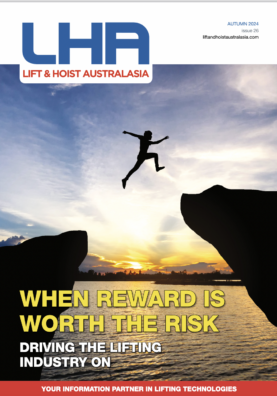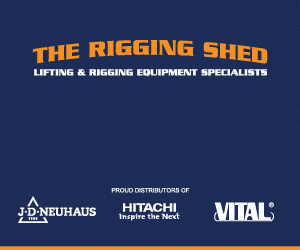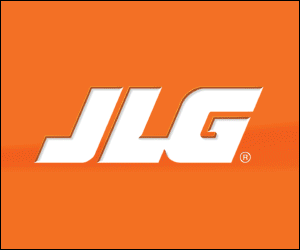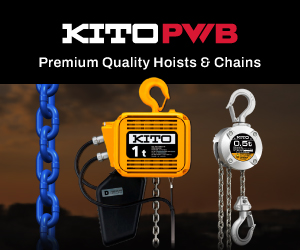)
Breaking Point
There are many reasons why lifting gear breaks. Here, we look at seven common causes.
There is an unacceptable reality that even when lifting is a core function at a company or on a jobsite, it is not given the recognition is deserves in terms of safety and competence-based expertise.
We see hundreds of inductions given every year, often at the same companies, and while these sessions make workers aware of the safety rules and controls in place, the hazards they might be exposed to, and how to work safely onsite, they miss the mark in terms of lifting equipment and related best practices. Safe lifting is often not even discussed; lift plans are not mandatory; product training isn’t mentioned; and competency requirements fall short. This must change, and companies where lifting is a key component of their operation must do better.
This is why, whenever we see or hear about an item of lifting equipment breaking or being damaged, regardless of the manufacturer or supplier, it is nearly always the product that is the first thing to be blamed.
However, in a day and age of strict testing, technical analysis and manufacturing requirements, it is rarely the product that is actually at fault. Of course, there will still be cheaper, inferior product in a market but most reputable lifting companies will not supply them through fear of damaging their reputations; the risks are too high. More often, such product is sourced from the internet or hardware stores that do not understand quality issues.
Human error and a lack of education remain bigger problems.
Why does lifting gear break?
- Lack of planning
They say that by failing to prepare, you are preparing to fail and in terms of lifting, a lack of planning can be fatal. Risk assessments and lift plans are designed to reduce the risks associated with each lift and in most cases we find that either a lift plan has not been completed, or it has not been amended for non-routine lifts, a change of equipment or a change to the site conditions.
What is the solution?:
Plan! A lift plan should routinely be followed for every lift. The plan must be amended when a non-routine lift is due to take place.
Checklist
- Ensure a lift plan is followed for each lift
- Amend the lift plan when a non-routine lift is being completed
Example:
On a large project a pre-assembled roof structure needed to be lifted into place. A risk assessment and lift plan was completed based on lifting each section at a time. However, a decision was made on the day to bolt sections of the roof together to save time. No one thought to amend the lift plan. The crane could have been easily overloaded or operated outside of its radius or the lifting gear could have failed.
- Lack of training
We’ve spoken a lot over the years about competence. Australian Standards make frequent references to competence and competent persons. A competent person will have acquired thorough training, education and experience, or a combination of these, in addition to the knowledge and skills enabling that person to safely and effectively perform the task required.
Competency isn’t achieved through simply working around equipment for a long time or applying theories based on experience alone; it’s a mixture of everything, including understanding product limitations, ground and elemental conditions, and more.
You may have heard someone say that they are competent because they have been using lifting equipment to rig loads for a long period of time. However, they may have never received the training and education to know what the safe use criteria actually is. It is also bad practice to take advice from others who might have been doing a task for a period of time but never been trained properly themselves.
What is the solution?: Fortunately, there’s a lot that can be done. Where there’s a lack of training, increase it. Base this education on understanding the competency requirements. That will result in selecting the right person to use the right equipment for the job. Also, cultural assumptions must be weeded out of a company or jobsite, which starts by everyone respecting and understanding proper and safe use of equipment.
Checklist
- Increase training of staff
- Understand competency requirements
- Ensure the right person is doing the job
- Address the culture issues surrounding safety and the safe use of equipment
Example:
A new employee joined a company and was asked to move a piece of pipework from one side of site to the other. In his interview he indicated he had worked alongside a rigger for many years and used lifting equipment all the time. During the lift, the load failed on one end and injured a worker below. SafeWork NSW investigated and neither the worker nor company could prove competency according to the standards.
- Equipment selection
Poor equipment selection often stems from people using what is available, not what is best suited to the task. It is also common for people to not pay attention to the working load limit (WLL) of the equipment they are using. This results in that equipment being overloaded beyond the capacity that it was designed to safely lift.
What is the solution?: Product training is key. Only by understanding the equipment can someone select and use it wisely. Wider availability is necessary on most sites as well. If a site is poorly equipped then there’s an increased chance that the wrong products will be used. Better access should be given to trained professionals that can give advice and deal with product enquiries.
Checklist
- Arrange product training
- Ensure assets are available and safe for use
- Provide access to trained professionals for advice and product enquiries
Example:
An 11-tonne load needed to be lifted. The worker had two 10mm, two-legged chain slings available that had a WLL of 5.5t and used them lift 11t. He thought that by using two 5.5t slings he could double the working load. It is easy to do, especially when people think that they know what they are doing and don’t want advice from others.
- Miscalculating the load
Loads come in all shapes, sizes and weights. Sometimes they have a known weight and dimensions, and other times not. Obviously, you should never guess how much a load weighs. “It looks like that load we lifted last week—and that was about two tonnes,” is not good enough. Various factors go into the weight of a load and even if it is known, centre of gravity can lead to overload scenarios. Consider if one side is much heavier than the other; what impact will that have on the rigging gear and crane or hoist?
What is the solution?: Complete a risk assessment and make reference to the lift plan. Understand the origin of the load, its dimensions, weight and whether centre of gravity is an issue. Ask a supervisor or third party to review your lift plan and the equipment selected. Seek guidance from an industry professional and / or the manufacturer of the load and the lifting tools.
Checklist
- Complete a risk assessment and refer to the lift plan
- Ask a supervisor or third party to review the lift and equipment selection
- Refer to an industry professional or the manufacturer for product advice
Example:
A transformer needed to be moved on a busy construction site. The crane operator knew the weight of the transformer and assumed it was a straightforward lift however he failed to notice that it was bolted to the ground. As he attempted to lift the load the crane toppled and the worker narrowly avoided injury.
- Shock loading
Shock loading usually stems from rushing, carelessness and a lack of knowledge. Where I’ve seen shock loading in the past I can usually point immediately to one of those factors and commonly the operator or rigger who has made the error didn’t have the competence to detect the risk before it was too late. Understanding stability and centre of gravity are key, as is consideration of the lift path and journey of travel.
What is the solution?: Slow down, take your time and don’t rush your lifts. Eliminate the chance of surprise and limit the possibility of a shock by limiting or removing the risks. Are the centres of gravity offset? Does the load have pick points and will it be able to make a smooth, seamless path to its destination?
Checklist
- Complete a risk assessment and refer to the lift plan
- Ask a supervisor or third party to review the lift and equipment selection
- Refer to an industry professional or the manufacturer for product advice
Example:
A 10t electric overhead travelling (EOT) crane was rigged with a 10t spreader beam. They were being used to lift what was reported to be an 8t box—a fact verified by load cells that had been calibrated. The box contained a heavy steel component that was supposedly securely fixed to the bottom of the box. It wasn’t and as the load was lifted the component shifted and left the load hanging on one end, causing a second shock load that led to the load falling to the floor.
- No pre-use inspection
There are a vast amount of defects that are not easily detected by untrained personnel, but even a basic pre-use inspection will tell the user if there are visible problems with the rigging gear and they will be able to learn a lot from the tool’s tags and identification labels. Even if you have recently used a product, it is important to look at it again quickly before reusing it. A visual equipment inspection is often the easiest and fastest ways to avoid injury and damage when lifting or moving heavy objects.
What is the solution?:.
Checklist
- Always complete a pre-use equipment inspection
- If you are not sure what to look for, ask a professional
- If in doubt, discard it and get it checked
Example:
On a site recently, a concrete clutch was used to transport goods around site by a pick-and-carry crane and due to the bouncy movement of the ride across site it formed a stress fracture in the knuckle. A quick pre-inspection identified the issue and the item was put in the out-of-service bin on site.
- User error
Even when training and planning has taken place, safety comes down to the user making the right decisions on the day. Poor decisions can include choosing to work alone when a team is required; picking up the wrong tool when rushing; working fatigued; not correctly assessing risk; not asking for help and making miscalculations; not following procedure and not referring to the lift plan or risk assessment.
When products are taken out of their limitations, risk is heightened.
In the end the responsibility to make sure that every lift is safe falls to the individual. In most cases, they are working with dangerous equipment and in a dangerous environment. Making a wrong decision could cost them or those around them, significantly.
What is the solution?: Ensure there is time allocated to complete the job safely and work in a team if necessary. Strictly follow the lift plan and manufacturers’ requirements are strictly followed.
Checklist
- Don’t rush. Take your time and stop to think
- Always check your gear for each and every lift
- If in doubt, stop, reassess, or ask for help
Example:
A worker was asked to move metal plates from one location to another. It was the last lift on a Friday afternoon. Rushing to clock-off as quickly as possible, the employee did not lock off the arm on the magnetic lifter correctly and was not careful to ensure his feet were not positioned under the load. The load gave way, the plate landed on his feet and he lost his toes.
A full Why Lifting Equipment Breaks checklist, including reasons the cause is commonplace and related problems, is available for download on the Ranger Lifting website at ranger.com.au









